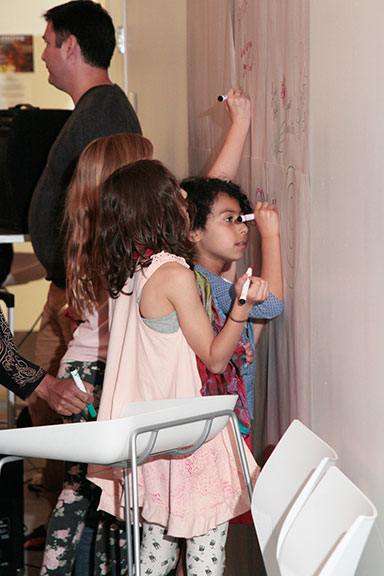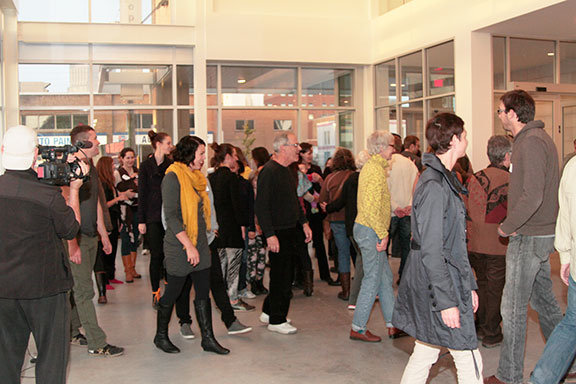Documentation
How do we document the relation? How can documentation be another form of relational building, another kind of practice? How do we document the rehearsal performance in a way that keeps opening the practice? How is the documentation another kind of arena for encounter as a performative event? This documentation takes place in another kind of spatial/temporal orientation than the live performance and yet how can it push the question, ideas and openings we are searching for? How do we document the coming together and making of differences, resulting in the emergence of something new?
How can the live video and photo documentation feed back into the performance so that the documentation practitioners are being move differently by the ways they interact with the unfolding performance they are in the midst of?
As I document this work into a blog format, I notice how I placing the work in dialogue with different theories I am currently reading. For instance right now I am reading “The Lie of the Land”by Paul Carter. In “The Lie of the Land- a politics of the ground,” Carter offers a critique of representation and colonialism in Western art where choreography and dancing take a critical role. He examines how Western choreography participates ontologically in a colonialist relationship to the ground.
Looking at an observation by french theorist Paul Valery on the difference between the dancer’s and topographers relation to the ground, Carter observes that in different kinds of western dance, the relation to the ground is through its leveling, demise and forgetting. He writes, “a society engaged with clearing the ground in danger of tripping over the unthinkable and unnameable, is hardly able to internalize movement and transform it into a self sustaining dance.”
If the dancer can enjoy a certain state of mind, an absorption in their own movement, it is because of the prior activities of the explorer and the surveyor. Without their labours in creating a clearing, leveling its irregularities and removing its obstacles, the figures of the dancer could hardly be performed. The colonizing explorer precedes the pirouetting dancer.
I read Lie of the land through and alongside dance theorist Andre Lepecki and his close reading of performance artist William Pope L. “the friendliest Black Artist in America (TM).” Pope’s crawling performances are in dialogue to Franz Fanon’s moment of stumbling in the racialized field. The stumble is a choreographic response to the regimes of the racialized field, where the stumble marks the becoming present in the racist terrain. Presence appears only once there is the stumble and the quivering in the terrain.
Where there is a lack of relation to the ground, it is impossible for dance to listen to the historical, cultural and political accidents reverberating kinesthetically and acoustically throughout the lie of the land; it prevents the onto-historical ground from quivering up into the bodies of dancers and from mobilizing them otherwise. In reading the Lie of the Land I question how we as a group attended to the land beneath our performance? How does the land and its multiple types of bodies seep in and move us differently? How do we engage the question “what happened here?” so that we can attend to the particular grooves of the land our restorying.. is in relation to.


